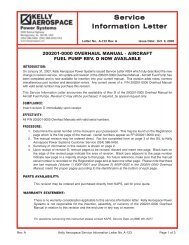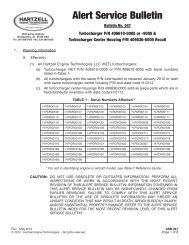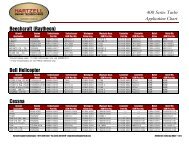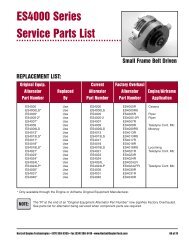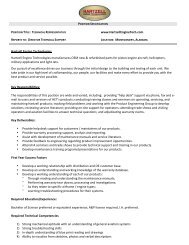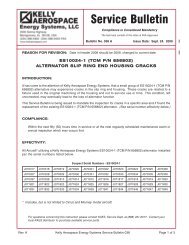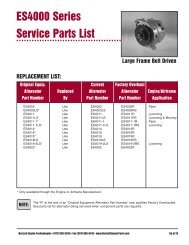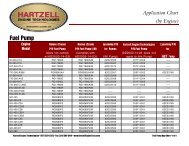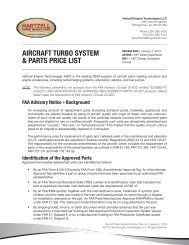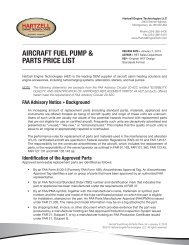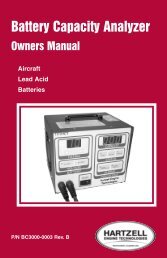Service Information - Hartzell Engine Technologies
Service Information - Hartzell Engine Technologies
Service Information - Hartzell Engine Technologies
You also want an ePaper? Increase the reach of your titles
YUMPU automatically turns print PDFs into web optimized ePapers that Google loves.
e. When this is completed the paralleling lead is reconnected, the first system is switched on<br />
and the loads compared. Each load should be equal or its maximum differential no more<br />
than 15% of the rating of a single alternator. (Example: In the case of 60 amp alternators,<br />
9 amps should be the maximum difference.)<br />
f. If it is desired to pull the load division closer together, the heavier loaded channel’s<br />
regulator may be adjusted lower, the lighter channel’s regulator adjusted higher on both.<br />
This is a very fine adjustment and may not be readjusted too far.<br />
g. An alternate method used when it is anticipated that very small loads are to be paralleled<br />
is to use the Alt. Out Indicators as an aid for the adjustment. This involves using the<br />
lightest loading possible and begins by setting the systems as shown above. If one<br />
channel’s Alt. Out indicator is lit signifying that it’s off the bus, readjust it slowly upward until<br />
its Alt. Out indicator just goes out. This usually provides the sharpest paralleling for low<br />
loads.<br />
h. Regardless of the procedure, test the system by turning on the heaviest loads available<br />
and vary engine speeds, together and separately (if possible) to be certain that everything<br />
remains properly in balance throughout the speed and load range of the alternators.<br />
PROBLEMS & TROUBLESHOOTING:<br />
a. If problems are encountered the first thing is to check each channel individually. If both<br />
channels don’t operate properly, don’t attempt to parallel until the problem is remedied. It<br />
may be anything from a loose belt to a bad rotor coil in one of the alternators.<br />
b. Good paralleling depends on balance. If substantial voltage rise is necessary to achieve<br />
equal load division the problem is usually a higher impedance across one of the channels.<br />
The ground return must also be included in this analysis.<br />
c. In order for proper load sharing to occur both channels must be approximately the same<br />
impedance. If not the higher impedance channel’s voltage regulator must raise voltage<br />
excessively to achieve load balance. This voltage rise is an indication that such a problem<br />
has occurred. Sometimes the higher impedance channel may be determined by precise<br />
measurement of the voltage drop when it is operated by itself and compared to the other<br />
side.<br />
WARNINGS & PRECAUTIONS:<br />
Consult your airframe operating and maintenance manuals and technical information for<br />
additional guidance in application.<br />
RECORDS:<br />
Not applicable.<br />
REVISION HISTORY:<br />
New<br />
APPROVAL:<br />
Randy Knuteson, Director of Product Support<br />
October 8, 2001 Kelly Aerospace, Inc. <strong>Service</strong> <strong>Information</strong> 0101 Page 2 of 2



